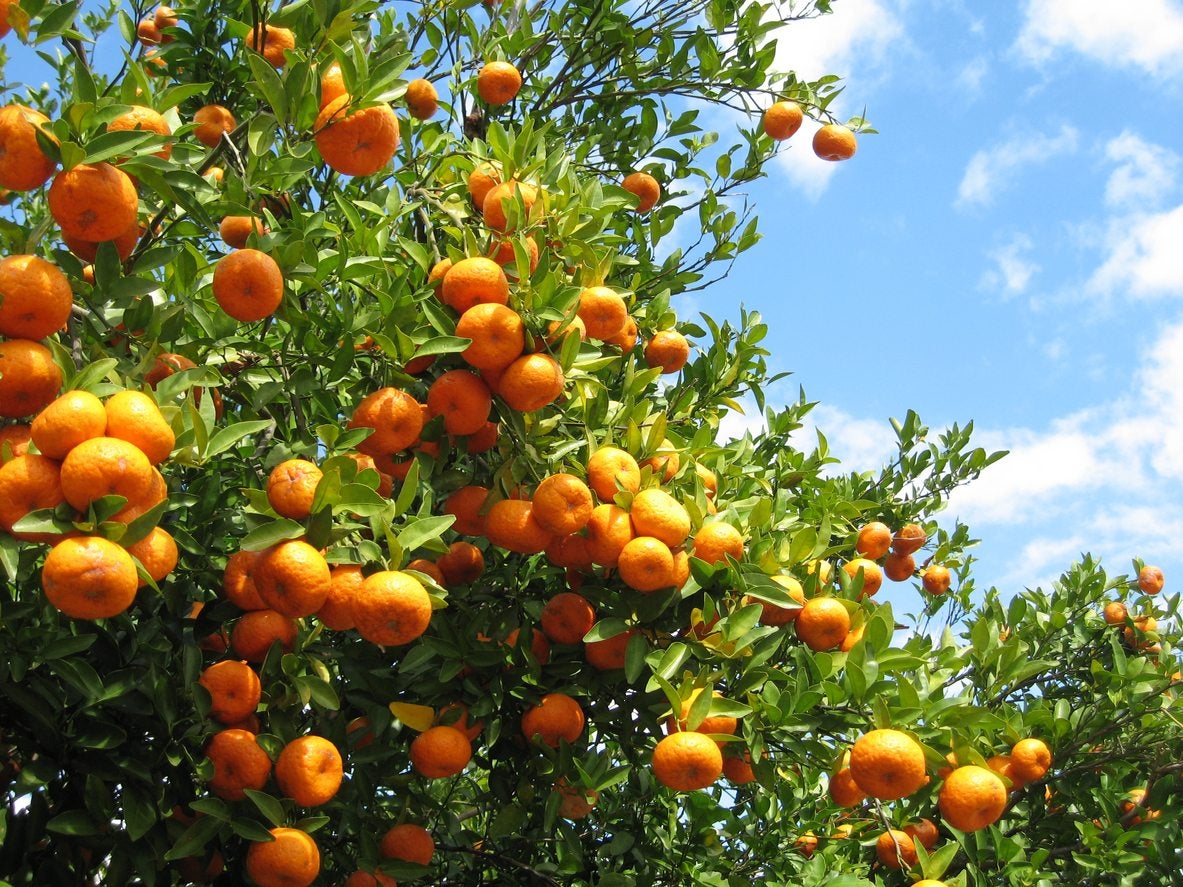Zone 8 Citrus Trees: Tips On Growing Citrus In Zone 8


The traditional citrus belt spans the area between California along the Gulf coast to Florida. These zones are USDA 8 to 10. In areas that expect freezes, semi hardy citrus is the way to go. These might be satsuma, mandarin, kumquat, or Meyer lemon.
Any of these would be perfect citrus trees for zone 8. Containers are also excellent options for growing citrus in zone 8. So, whether you want sweet fruits or acid-type fruits, there are selections available that can thrive in zone 8.
Can You Grow Citrus in Zone 8?
Citrus was introduced to the continental United States in 1565 by Spanish explorers. Over the years there have been increasingly large groves of many types of citruses, but most of the oldest stands have died to freeze damage.
Modern hybridizing has led to citrus plants that are hardier and more able to withstand such factors as high humidity and occasional light freezes with protection. In the home garden, such protection can be more difficult without the technology available to large scale growers.
This is why selecting the right citrus trees for zone 8 is important and enhances your chances of successful harvests. Much of the zone 8 region is coastal or partially coastal. These areas are mild and have extended warm seasons, but they also receive violent storms and some freezing during winter. These are less than perfect conditions for tender or even semi-hardy citrus plants.
Choosing one of the hardier cultivars as well as situating the plant with some protection can help defray these potentially damaging conditions. Dwarf plants are easier to look after in case of storm or freeze expectations.
Keeping an old blanket handy to cover the plant when a cold snap is due can help save your crop and the tree. Young zone 8 citrus trees are particularly susceptible. Trunk wraps and other types of temporary covers are also beneficial.
Gardening tips, videos, info and more delivered right to your inbox!
Sign up for the Gardening Know How newsletter today and receive a free copy of our e-book "How to Grow Delicious Tomatoes".
Selection of rootstock is also important. Trifoliate orange is an excellent rootstock which imparts cold resistance to its scion.
Zone 8 Citrus Trees
Meyer is the most cold hardy variety of lemon. Fruits are nearly seedless and even a small plant can produce a large harvest. The Mexican or Key West lime is the most tolerant of cold in this fruit category.
It may do best grown in a container on casters that can be moved to shelter if heavy cold weather threatens. Satsumas are cold tolerant, and their fruit will ripen well before most cold weather occurs.
Some of the better cultivars are Owari, Armstrong Early, and Browns' Select. Tangerines, like satsumas, are very able to withstand light freezes and cold temperatures. Examples of this fruit might be Clementine, Dancy, or Ponkan.
Kumquats bear no harm even when exposed to temperatures of 15 to 17 degrees F. (-9 to -8 C.). Ambersweet and Hamlin are two sweet oranges to try and navels like Washington, Summerfield, and Dream are good in the zone.
Growing Citrus in Zone 8
Choose a full sun location for your citrus. Citrus trees can be planted on the southwestern side of the house near a wall or other protection. They perform best in sandy loam, so if your soil is clay or heavy, add plenty of compost and some fine silt or sand.
The best time to plant is late winter or early spring. Dig the whole twice as wide and deep as the root ball. If necessary, cut across the root ball several times to loosen roots and stimulate root growth. Fill in around the roots halfway and then add water to help soil get in around the roots.
When water is absorbed by soil, tamp down and finish filling the hole. Water the soil again. Make a water trench around the root zone of the tree. Water twice per week for the first month and then once per week unless extreme dry conditions occur.

Bonnie Grant is a professional landscaper with a Certification in Urban Gardening. She has been gardening and writing for 15 years. A former professional chef, she has a passion for edible landscaping.